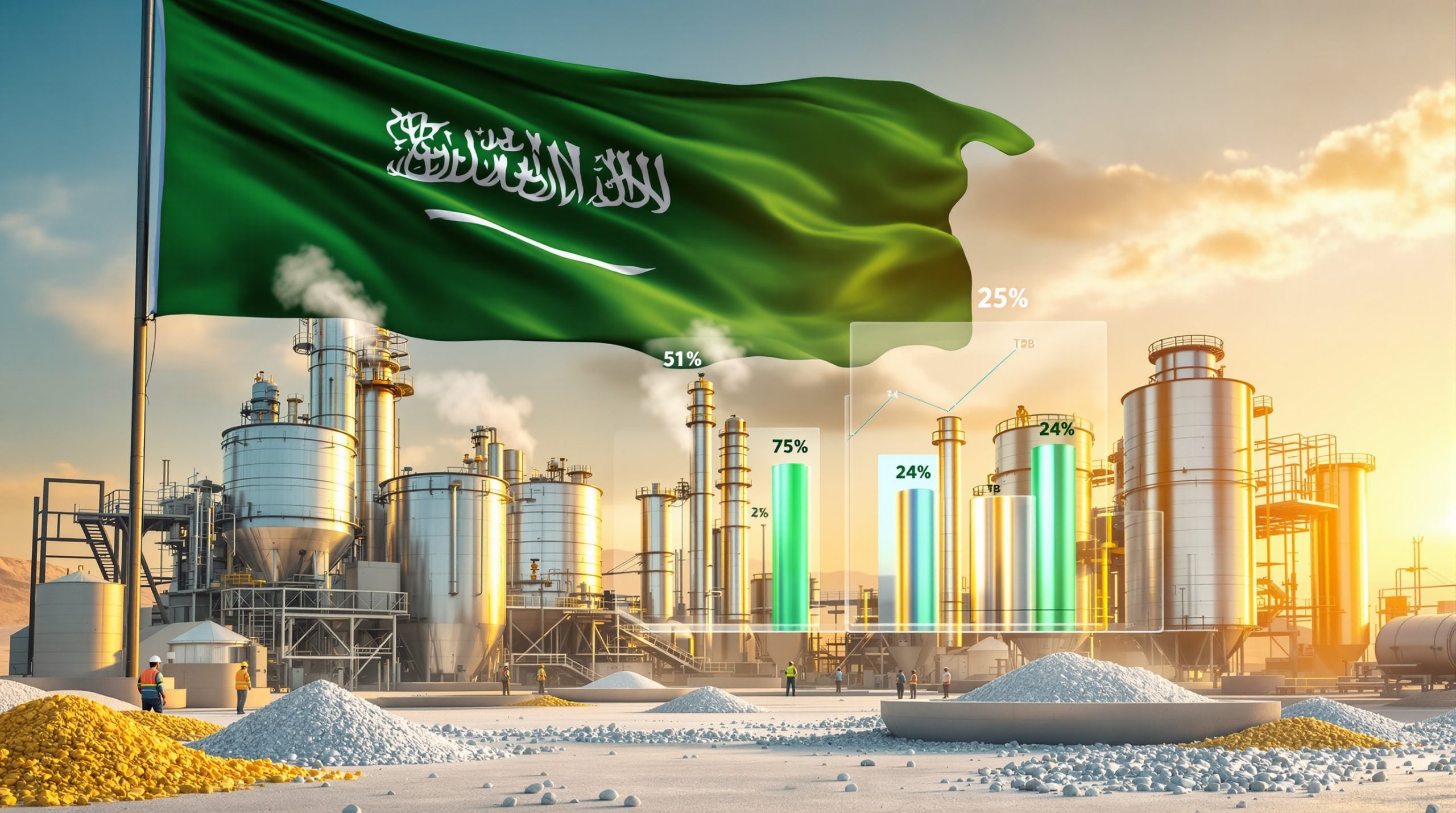The Strategic Revolution in Raw Materials Recycling
The global economy stands at a critical juncture where traditional supply chain dependencies threaten national security and industrial competitiveness. Concentrated control over critical mineral resources has created unprecedented vulnerabilities that demand innovative solutions beyond conventional diplomatic and trade approaches.
Raw materials recycling solution to China dependency represents more than environmental responsibility—it constitutes a fundamental restructuring of resource security frameworks. Nations implementing comprehensive recycling strategies can establish domestic value chains resilient to external disruption while reducing long-term exposure to volatile commodity markets and geopolitical tensions.
The technological infrastructure required for scaled recycling operations differs substantially from traditional extraction methods. Unlike mining operations that require decades of development, recycling facilities can leverage existing industrial frameworks and achieve operational status within significantly compressed timeframes.
Current Recycling Performance and Strategic Gaps
The disparity between recycling ambitions and operational reality reveals systemic challenges across multiple material categories. European recycling rates demonstrate the magnitude of infrastructure development required to achieve strategic autonomy objectives, particularly considering industry evolution trends affecting the sector.
Critical Material Recycling Performance Analysis:
| Material Category | Current EU Rate | 2030 Strategic Target | Implementation Gap |
|---|---|---|---|
| Rare Earth Elements | <1% | 25% | Critical intervention required |
| Lithium | 5% | 25% | Substantial capacity building needed |
| Cobalt | 15% | 25% | Moderate scaling required |
| Platinum Group Metals | 35% | 45% | Incremental improvement achievable |
The European Union's Critical Raw Materials Act, which entered into force in 2024, establishes binding targets requiring recycling to meet 25% of EU demand for critical minerals by 2030. Current rare earth recycling rates below 1% highlight the unprecedented scale of infrastructure development required to achieve these objectives.
Material Recovery Challenges:
Current recycling technologies face efficiency constraints particularly affecting complex materials like rare earth permanent magnets and multi-element battery systems. Traditional separation techniques often result in material degradation or cross-contamination that reduces recovered material value.
• Collection system deficiencies: Battery collection rates reach approximately 50% due to informal recycling networks and consumer disposal patterns
• Separation technology limitations: Rare earth recycling processes achieve only 70-80% of virgin material performance specifications
• Economic viability thresholds: Recycling operations become uncompetitive when primary material prices decline
• Infrastructure concentration: Recycling capacity remains concentrated in specific geographic regions
Global lithium-ion battery recycling captures only 5% of lithium from end-of-life batteries despite recovering 90%+ of cobalt and nickel. However, recent battery recycling breakthrough developments may significantly improve these recovery rates.
Regulatory Frameworks Driving Market Transformation
European leadership has articulated clear objectives for reducing dependency through recycling infrastructure development. According to EU industry officials, raw materials recycling solution to China dependency represents the primary pathway for achieving strategic autonomy, particularly from Chinese suppliers.
The regulatory approach establishes artificial market conditions favoring recycling over imports through binding quotas and investment incentives. This framework creates demand certainty that justifies capital investment regardless of short-term commodity price fluctuations.
Policy Implementation Mechanisms:
• Extended Producer Responsibility requirements transferring end-of-life costs to manufacturers
• Import tariff structures creating price advantages for domestic recycled materials
• Strategic stockpiling mandates generating consistent demand for recycled content
• Investment subsidies improving recycling facility economics
The EU allocated €1.1 billion for critical raw materials infrastructure development between 2023-2027, with substantial portions directed toward recycling capacity expansion. These investments create artificial demand conditions that support facility development during periods of abundant primary supply.
Permit Acceleration Requirements:
Regulatory complexity has historically delayed recycling infrastructure projects. EU officials noted that permit acquisition processes require simplification after numerous projects were abandoned due to regulatory delays. This recognition has prompted streamlined approval mechanisms for strategic recycling facilities.
Technological Innovation Requirements
Current recycling technologies operate at varying Technology Readiness Levels, creating implementation challenges for scaled deployment. Advanced separation technologies remain largely in pilot or demonstration phases despite commercial pressure for rapid deployment.
Processing Technology Assessment:
| Technology Category | Current TRL | Recovery Efficiency | Commercial Viability |
|---|---|---|---|
| Pyrometallurgical battery recycling | 9 | 40-50% lithium | Commercially deployed |
| Hydrometallurgical processing | 6-7 | 70-85% lithium | Demonstration phase |
| Direct recycling methods | 5-6 | 95%+ theoretical | Early development |
| AI-powered sorting systems | 7-8 | 60-75% complex materials | Pilot deployment |
Material Degradation Challenges
Rare earth element recovery from permanent magnets presents particular technical challenges. Chemical dissolution processes required for separation degrade crystal structures that provide magnetic performance characteristics. Current technology achieves 70-80% of virgin magnet performance, limiting applications in aerospace and premium automotive sectors.
Emerging Technology Solutions:
• Hydrometallurgical innovations preserving material purity during separation
• Modular processing units reducing infrastructure requirements for smaller operations
• Direct recycling methodologies maintaining original crystal structures
• Advanced sorting algorithms improving material identification accuracy
Cross-contamination in complex electronic products creates additional separation challenges. Modern electronics contain multiple rare earth elements in close proximity, requiring sophisticated separation techniques to achieve element-specific recovery.
Geopolitical Drivers Accelerating Investment
Trade restrictions and export controls have fundamentally altered risk-reward calculations for recycling infrastructure investment. When primary supply chains face potential disruption, recycling capabilities become strategic assets rather than environmental initiatives.
Recent developments highlight supply chain vulnerability concerns. US-China agreements regarding rare earth export restrictions are viewed as temporary arrangements unlikely to provide long-term stability. Industry officials suggest these arrangements may not persist beyond 12-month timeframes.
Strategic Response Patterns:
Companies are advised to reevaluate procurement strategies and reduce exclusive reliance on Chinese suppliers. This shift creates market demand for alternative sourcing, including recycled materials, regardless of immediate cost considerations. Furthermore, the development of critical raw materials facility networks has become essential.
• Defence procurement requirements favoring recycled content for security applications
• Critical mineral partnership agreements excluding dominant suppliers from strategic relationships
• Supply chain diversification mandates reducing concentration risk
• Strategic stockpiling programmes creating artificial demand for domestic capacity
The EU's gallium and rare earth permanent magnet production is projected to increase sixfold by 2030, reflecting coordinated efforts to establish domestic processing capabilities. This expansion requires parallel development of recycling infrastructure to ensure sustainable feedstock supplies.
Economic Competitiveness Models
Recycling economics improve substantially when supply security premiums are incorporated into cost calculations. Industries requiring guaranteed material availability often accept higher recycling costs to avoid supply chain disruptions.
Cost Structure Comparison Analysis:
| Component | Virgin Materials | Recycled Materials | Strategic Advantage |
|---|---|---|---|
| Extraction costs | High capital intensity | Minimal extraction requirements | Recycling favoured |
| Transportation | International shipping | Local processing networks | Reduced logistics complexity |
| Processing energy | Intensive mineral separation | Moderate separation requirements | Lower energy intensity |
| Environmental compliance | Extensive regulatory requirements | Reduced environmental impact | Simplified approval processes |
| Supply reliability | Geopolitically vulnerable | Domestically controlled | Enhanced security |
Investment Partnership Structures:
Successful recycling infrastructure typically requires blended financing combining government strategic objectives with private sector operational efficiency. Risk-sharing arrangements often involve government demand guarantees supporting private facility development and operations.
Financing Innovation Mechanisms:
• Green bonds specifically targeting recycling infrastructure development
• Strategic investment funds focused on supply chain security objectives
• Technology development grants supporting processing innovation
• Tax incentives improving project financial returns
Industrial Symbiosis and Circular Design
Integrated processing networks enhance recycling efficiency through industrial clustering where waste streams from one facility become feedstock for another. This approach reduces transportation costs, improves material recovery rates, and creates economies of scale.
Successful Implementation Models:
Automotive cluster recycling operations process battery, catalyst, and electronic waste within geographic proximity. Urban mining facilities extract materials from electronic waste concentrations in major metropolitan areas. Industrial park integration allows multiple recycling processes to share infrastructure and utilities.
Design for Recyclability Requirements:
Regulatory frameworks increasingly mandate product design considering end-of-life material recovery. This approach fundamentally alters product development processes and creates standardised material streams improving recycling efficiency.
• Material passport systems tracking composition and location throughout product lifecycles
• Modular design requirements facilitating component separation
• Standardised alloy specifications reducing separation complexity
• Manufacturer take-back programmes ensuring material return systems
Strategic Stockpiles and Market Making
Government stockpiling programmes create artificial demand supporting recycling infrastructure development during periods of abundant primary supply. These programmes function as market makers, providing consistent demand justifying capital investment in recycling capacity.
Reserve Function Implementation:
Strategic stockpiles serve multiple objectives beyond emergency response. Price stabilisation during supply disruptions, technology development funding through reserve sales, industry confidence building through guaranteed purchase agreements, and emergency response capabilities during crisis periods. In addition, critical minerals reserve systems provide essential security frameworks.
Performance Measurement Frameworks:
| Metric Category | Measurement Approach | Strategic Significance |
|---|---|---|
| Recovery efficiency | Percentage of available materials processed | Resource optimisation |
| Material purity | Quality specifications for recovered materials | Market acceptance |
| Cost competitiveness | Price comparison with virgin material alternatives | Economic viability |
| Supply consistency | Reliability of material availability | Strategic security |
Success requires balanced optimisation across multiple dimensions rather than focusing on individual performance metrics. Programmes achieving high recovery rates but producing low-quality materials often fail to create sustainable market demand.
Regional Processing Networks and Trade Patterns
The development of regional recycling capabilities reflects broader supply chain regionalisation trends and reduced dependence on distant suppliers. Processing hubs specialise in particular material categories based on local waste streams and industrial capabilities.
Hub Development Characteristics:
• Proximity to consumption centres reducing transportation costs and improving logistics efficiency
• Renewable energy access improving environmental credentials and operational costs
• Skilled workforce availability supporting advanced processing technology deployment
• Regulatory stability encouraging long-term infrastructure investment
Unlike centralised mining operations creating single points of failure, recycling infrastructure can be distributed across multiple facilities and geographic regions. This distribution enhances overall system resilience while reducing transportation requirements and environmental impacts.
Resilience Enhancement Factors:
Geographic diversification reduces regional risk concentration. Technology redundancy ensures continued operation during equipment failures. Feedstock flexibility allows processing of multiple waste streams. Scalability enables capacity adjustment based on demand fluctuations. Furthermore, mine reclamation innovation supports sustainable development approaches.
Implementation Timeline and Infrastructure Requirements
The transformation toward circular material recovery requires coordinated development across technological, regulatory, and economic dimensions. Current infrastructure gaps must be addressed through systematic capacity building rather than incremental improvements.
Critical Development Phases:
Initial infrastructure establishment typically requires 2-5 years for facility development and operational startup, compared to 10-15 years for traditional mining project development. This timeline advantage provides strategic opportunities for rapid supply chain diversification.
Technology maturation presents ongoing challenges as most advanced recycling processes remain in pilot or demonstration phases. Commercial deployment requires balancing operational risk with strategic security objectives, often requiring government support during technology transfer periods.
Investment Scale Requirements:
Achieving 25% recycling targets requires annual capital investments substantially exceeding current funding levels. The gap between strategic objectives and investment flows highlights the need for innovative financing mechanisms combining public strategic objectives with private operational efficiency.
Material recovery operations must achieve simultaneously high efficiency, consistent quality, and competitive costs to establish sustainable market demand. This multi-dimensional optimisation challenge requires coordinated technological development, regulatory support, and market creation initiatives. Consequently, raw materials recycling solution to China dependency demands comprehensive integration across all these dimensions.
Disclaimer: This analysis involves projections and forecasts based on current policy initiatives and technological development trends. Actual outcomes may vary significantly based on geopolitical developments, technological breakthroughs, and market conditions. Investment decisions should consider multiple scenario analyses and independent verification of technical and economic assumptions.
Looking for Investment Opportunities in Critical Minerals and Resource Security?
Discovery Alert's proprietary Discovery IQ model delivers real-time alerts on significant ASX mineral discoveries, helping investors identify actionable opportunities in the evolving critical materials landscape before the broader market. Explore why major mineral discoveries can lead to substantial market returns by visiting Discovery Alert's dedicated discoveries page, which showcases historic examples of exceptional outcomes, and begin your 30-day free trial today to position yourself ahead of the market.




